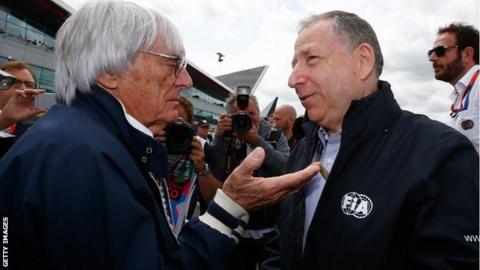
Formula 1 bosses have agreed to ditch the controversial new elimination qualifying system for the next race.
The previous system will be re-introduced for the Bahrain Grand Prix on 1-3 April after criticism of the new knock-out format at the season’s first race in Australia on Saturday.
The teams made a unanimous decision at a meeting in Melbourne on Sunday.
“We wanted to improve the show and we went in the wrong direction,” Mercedes F1 boss Toto Wolff said.
“It shows there is common sense in F1.”
The decision to change qualifying was instigated by F1 commercial boss Bernie Ecclestone.
The 85-year-old voted in favour of the new system, although he had wanted to introduce a more radical approach that would see the fastest drivers after qualifying demoted on the grid to try to promote closer racing.
But Wolff said that Ecclestone would fall in line with the teams’ decision.
“He agreed to it,” Wolff said. “I spoke to him and he sees it was the wrong decision.
“You can’t blame anybody because we really tried to optimise the show and we got it wrong.
“I am not quite sure he is happy to go back to the old format because he’d like to shake things up, understandably. But it is better to go back to the old format rather than staying with what we’ve invented yesterday.”
Red Bull team principal Christian Horner added: “It was done with the best intentions, to try to shuffle the grid around and create more excitement and to help the promoters. and unfortunately that didn’t happen. We gave it a go. The responsible thing has happened, the teams collectively have agreed it didn’t work and to go back with immediate effect.”
Wolff said it was likely changes to the format of grand prix weekends would be discussed again ahead of the 2017 season.
“We shouldn’t wipe it completely off the table that there isn’t a more attractive format,” he said, “but it needs consideration and structure so this will not happen during 2016. And over the winter we will revisit it.
“There is for sure ways of optimising qualifying and maybe even the race. But what we need is to properly assess what is right and wrong and not have erratic decision making.
“I think we should have more tyres and we should let them drive flat out, provide a great show, make it less complicated, the fastest man is on pole. That’s what counts.”
The decision needs to be approved formally by the final two stages of the legislative process, the F1 Commission and the FIA World Council.
Unanimity is needed there and tyre supplier Pirelli, which has a seat on the F1 Commission, did not say it would agree to the change.
Pirelli motorsport boss Paul Hembery said: “We haven’t heard all the arguments. There are positives and negatives. Obviously Q3 needed improving; not having cars running was unanimously seen as negative by fans and viewers but that could be resolved by going back to last year’s Q3.
“We have had no formal feedback as to what they want and what the arguments are. One argument we were given was for it to have an impact on the race strategy. It delivered that on many levels.
“If that is no longer required, we need to hear the arguments because we have only done one and it delivered on one level that we were told were the objectives.
“Most people would just like to understand what we are trying to achieve. Going from one to the other so quickly needs explanation.”



